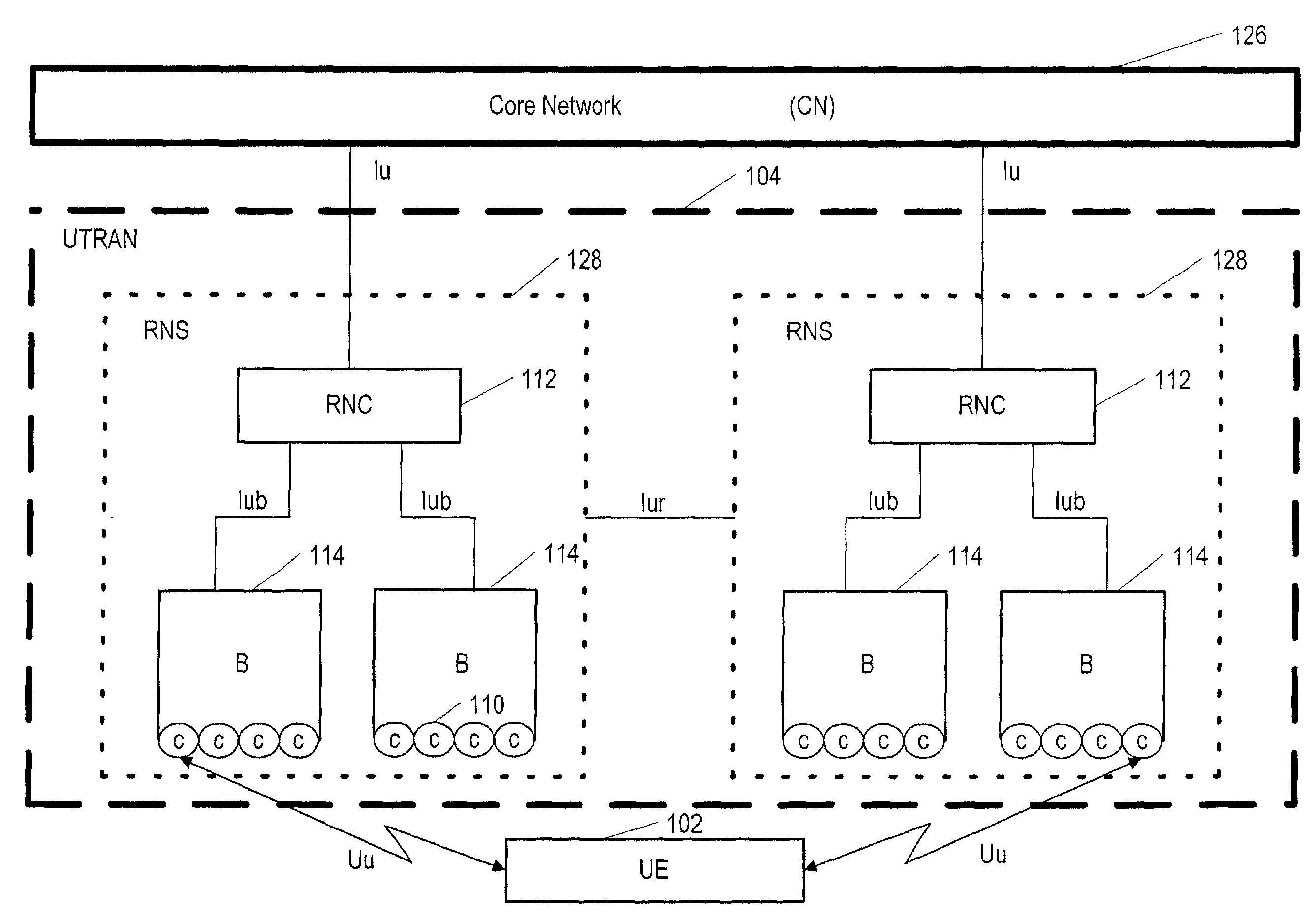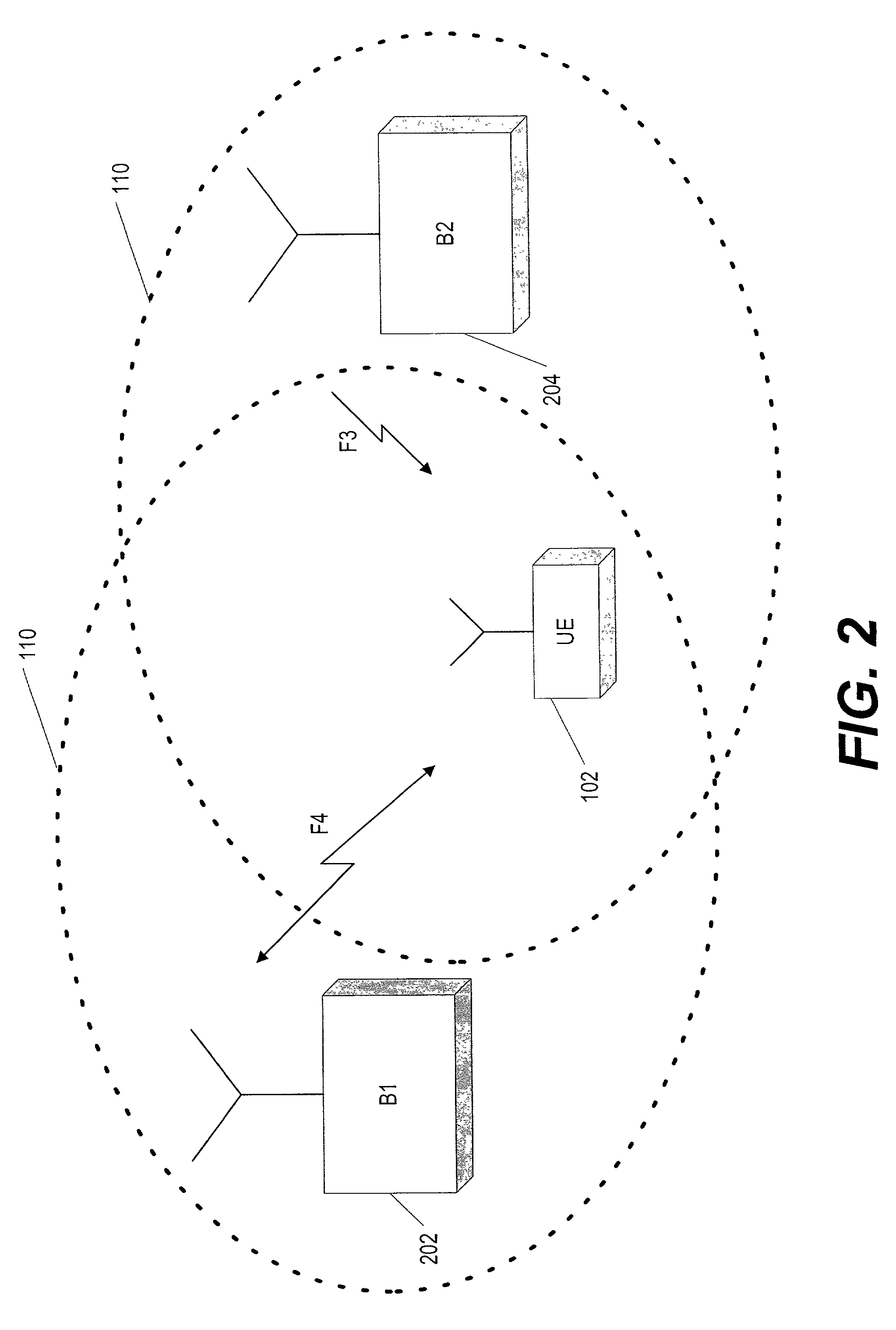Measurement method and device for activating interfrequency handover in a wireless telecommunication network
a wireless telecommunication network and inter-frequency handover technology, applied in the direction of transmission monitoring, wireless commuication services, electrical equipment, etc., can solve the problems of inability to complete operation, inability to and low power efficiency of linear amplifiers, so as to avoid interference, maintain the communication capacity of terminal equipment, and reduce the risk of disconnection
- Summary
- Abstract
- Description
- Claims
- Application Information
AI Technical Summary
Benefits of technology
Problems solved by technology
Method used
Image
Examples
Embodiment Construction
[0020]An embodiment of the best mode of the present invention can be implemented in the wireless telecommunications network environment shown by FIGS. 1 and 2. The present invention optimizes the air interface (Uu) between user equipment 102 and base stations 114 (base stations are also called Node B's in UMTS). The user equipment 102 of the present invention is capable of optimizing the interface Uu by avoiding the adjacent channel interference F3 shown in FIG. 2, and the terminal equipment 102 is thus able to reduce disconnections caused by the adjacent channel interference. This optimization method is implemented while the terminal equipment 102 and the base station 202 are communicating via a communication channel (F4), instead of involving interruptions of communication.
[0021]The method is depicted by the flow chart of FIG. 3. A received signal has already been processed to some extent by the terminal equipment 102 (this processing may include some filtering), but has not yet r...
PUM
 Login to View More
Login to View More Abstract
Description
Claims
Application Information
 Login to View More
Login to View More - R&D
- Intellectual Property
- Life Sciences
- Materials
- Tech Scout
- Unparalleled Data Quality
- Higher Quality Content
- 60% Fewer Hallucinations
Browse by: Latest US Patents, China's latest patents, Technical Efficacy Thesaurus, Application Domain, Technology Topic, Popular Technical Reports.
© 2025 PatSnap. All rights reserved.Legal|Privacy policy|Modern Slavery Act Transparency Statement|Sitemap|About US| Contact US: help@patsnap.com



